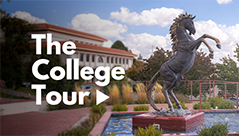Since 2011, mariachi music has been included on the list of “Intangible Cultural Heritages in Need of Safeguarding,” published by UNESCO, the education, science and culture arm of the United Nations. This summer, the WNMU music program took action to safeguard this heritage by hosting high school mariachi ensembles in a four-day conference, the inaugural event in what it expects to be an annual tradition.
El Son de la Gila: Exploring Culture through Mariachi was held on campus June 12-15. Drawing students and their mariachi directors from across the southwest, the conference provided an opportunity for high school musicians to learn from master mariachis and each other.
The idea for the conference came from a recognition that the rich cultural and musical heritage of mariachi deserves to be highlighted, celebrated, and passed down to future generations. Mariachi music is engrained in the identity of WNMU, a Hispanic Serving Institution, and the continued legacy of the art form is part of the university’s vision.
Too often, there is a stigma associated with mariachi music, and it is sometimes seen as a less legitimate form of music than other traditions, according to Bryant Chaffino, WNMU Music Program Coordinator, Director of the award-winning ensemble Mariachi Plata de WNMU and an organizer of the conference. School administrators, said Chaffino, do not always understand that in educational settings, “Mariachi is music education first and foremost . . . It involves teaching music theory, ear training, composition, and learning your instrument to its full capacity.”
El Son de la Gila was designed to provide these educational experiences. Chaffino explained, “The premise of this conference is that students get to network, meet friends, and learn from professional mariachi musicians that have been [performing] for years and come from generations of mariachi.” Conference topics were wide ranging, from mariachi history to instrumental technique, and many of the workshops were led by members of Mariachi Estrella de Mexico, who traveled from Jalisco to attend the event.
Second-year student Brissa Bolivar, a violinist with Mariachi Plata de WNMU who assisted with the conference, said the most exciting part of it was working with the talented mariachis who came to share their knowledge. “The instructors are so friendly,” she said, “They sit with us at lunch and share their experiences.” Bolivar emphasized that these professional mariachis are incredibly knowledgeable and talented without being intimidating.
For the high school students attending the conference, the opportunity to work with the professional mariachis was also a highlight of the conference. “The professional mariachi players are so good,” said Abel Andrade, a high school student at Albuquerque’s Atrisco Heritage Academy High School. Andrade described the voice of one of the instructors with Mariachi Estrella de Mexico as “angelic . . . It just inspired me.”
Adriana Lenten, also attending the conference from Atrisco Heritage Academy High School, agreed. “There are a lot of new things we have been experiencing in this conference. I think it’s a great thing that [the WNMU Music Program] chose to bring us here,” she said.
While the participating high school students attended sessions developed for them, high school group directors participated in advanced courses on subjects that varied from arranging music to the best practices for growing and sustaining a mariachi program at the high school level.
Raymond Gomez, Adjunct Instructor of Music at WNMU, believes that by providing this educational experience, the conference encouraged students to continue exploring mariachi and will ultimately expand musical opportunities for secondary students by motivating ensemble directors as well. Said Gomez, “We want to keep the motivation going, get more people to keep doing mariachi” at the high school level and beyond.
El Son de la Gila concluded with an opportunity for the student mariachis to open the university’s signature cultural celebration, ¡Fiesta Latina!, by performing at a live community concert featuring Mariachi Plata de WNMU and Mariachi Estrella de Mexico.
While the music program at WNMU currently does not offer a full degree program, the performers who have made Mariachi Plata de WNMU a regional powerhouse pursue their creative and cultural passion while majoring in everything from business to biology.
According to UNESCO, what especially matters about intangible cultural heritage is the “wealth of knowledge and skills that is transmitted through it from one generation to the next.” By hosting El Son de la Gila for the next generation of mariachis, WNMU is helping to preserve and carry forward this important cultural tradition.


